A Story, a Life, an Example.
What an interesting journey we have enjoyed in these ten days of "meditation" - Thank you Master @reddust, for your dedication, spirituality and goodness.
Today I've dedicated about six of them to reading each of the nine previous posts and the highlights, as well as some less recent ones from his profile, specifically:
- The Deathless in Buddhism
- Eating Meat – Why the Buddha was not a Vegetarian
- Liberating Insight Part 1, 2 & 3
I found myself in a historical uncertainty, and I looked for bibliographic material to clarify my doubts, here is a broad analysis of what I found (this material was already in the Markdown editor MarkPag for Windows, hence the quick release of the commentary):
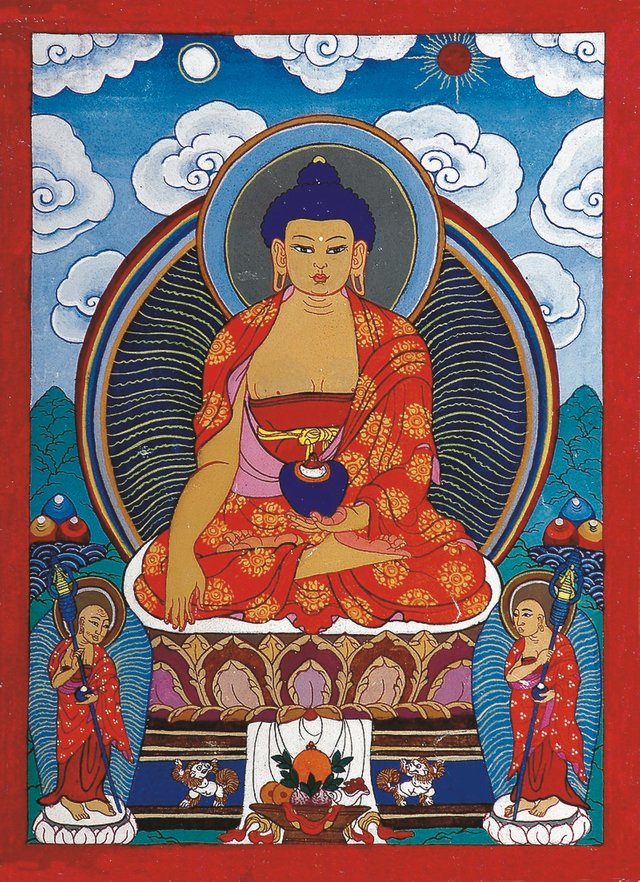
There is historical and scientific certainty about the existence of Gautama Buddha, originally called Siddhartha Gautama and later also known as Śākyamuni, therefore, the Buddha who founded the present Buddhist religion is called Shakyamuni Buddha. Shakya is the name of the royal family in which he was born and muni means "to be fit". Shakyamuni Buddha was born in 624 B.C. in Lumbini, a place that at the time belonged to India and is now part of Nepal. His mother was Queen Mayadevi, and his father, King Shudhodana.

Birth and life of child
One night, Queen Mayadevisoñó said that a white elephant was descending from the sky and entering her womb, a sign that she had just conceived a very special being. The fact that the elephant came down from heaven meant that the child came from Tushita, the pure land of Buddha Maitreya.
Months later, when the queen gave birth, instead of feeling pain, she had a wonderful experience in which she grabbed the branch of a tree with her right hand and the gods Brahma and Indra picked up the child, who was born from her side. The gods proceeded to venerate the infant and offer him ablutions.
When her husband the king saw the child, he was filled with joy and felt as if all his wishes had come true. He named him Siddhartha and asked a Brahmin to predict the prince's future. The soothsayer examined the infant with his powers of clairvoyance and said: "This child will be a chakravatin king which means a monarch who rules the whole world or an enlightened being, there are signs that indicate this. Since the era of the chakravatin kings has passed, he will become a Buddha and his beneficial influence, like the rays of the sun, will illuminate a billion worlds.
Buddhists commemorate his birth on the full moon of May, that is, next week, specifically on May 29, 2018 from 16:20.
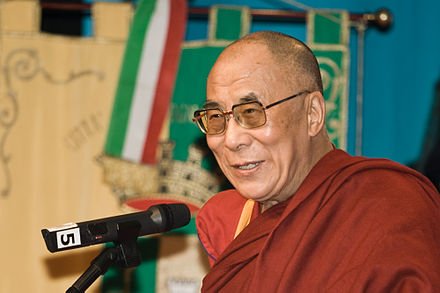
Adult life
His father, the raja, the king, Shudhodana, did not want his son to be a spiritual guide, so he gave the prince an enviable education while living the luxury of palace life and was protected from the knowledge of the outside world. He married Princess Yasodhara young and had a first-born son named Rahula.
Siddhartha studied the nature of disease, senescence, pain and death. The prince then presented himself to a sadhu as the Hindu holy ascetic is called and was deeply impressed by his calm and peaceful nature. As a result of this encounter, Siddhartha Gautama left behind the opulent life, his wife and son at the age of 29, and left the palace in the hope of earthly power and glory. Then he walked the roads of India in search of the truth about human existence.
Siddhartha's dissatisfaction with his life of luxury reached its limits. At the age of twenty-nine he decided to leave his family home and comfortable life to become a wanderer in search of truth, taking with him only his begging bowl and some simple habits. Which meant he gave up the safe world he was born into.
The world Siddhartha came out to was quite primitive, compared to our present world, however, it was much richer, in a philosophical and spiritual sense, than the modern Western world. The early Buddhist scriptures give the impression that there was a society with a deep interest in the fundamental questions of existence. There were a large number of meditation teachers, schools of philosophy abounded and religious debates were a kind of popular sport with many spectators.
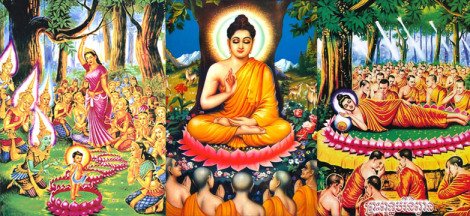
This happened not only in India but also in Greece, China, Persia and the Middle East. This concentrated ferment of human genius in the world has been called the Axial Age. Within this atmosphere, Siddhartha wandered around for six years, meditating and learning from the most famous teachers in northern India, with an admirable determination to find out what he felt he had missed in his previous life.From asceticism to meditation.
The most widespread religion in India now and then was Hinduism, a religion that worships many gods and believes that a life of great austerity is the way to spiritual merit. As he wandered about in rags and without money, Siddhartha discovered more Hindu ascetics who deeply overwhelmed him with their simple lives dedicated to prayer and meditation. They lived as penitents giving their lives completely to God. He was practicing extreme austere practices, often eating just one grain of rice a day and living outdoors.
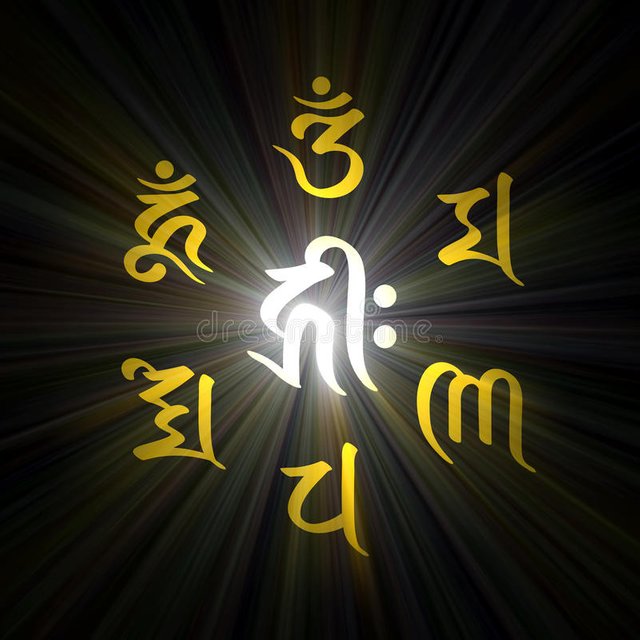
When that time of austerity ended, he realized that he was no closer to his goal of knowledge and wisdom, so he left the austere path and sat down in the shadow of a fig tree to meditate. Then he said, "Let my skin be dry, my hands go numb, and my bones break down. Until I have achieved understanding, I will not rise from this place.
He was 35 years old that day and for seven weeks he sat in meditation until finally his pleas were heard. This is the chronicle of the beginning of this person's spiritual journey. A journey that gave foundation to the doctrine of Buddhism. It is a path that refuses on the one hand self-sacrifice, and on the other hand self-pity.
While meditating, Siddhartha Gautama experienced a vision: he saw beings parading and reincarnating. Some of them in fortunate circumstances and others in unfortunate situations as stated in the universal law of karma according to which every good or evil deed will be rewarded or punished in this life or in any future reincarnation.
Growing up as a Hindu, Siddhartha assimilated the belief of reincarnation. He saw this cycle of rebirth as the beginning of humanity's suffering, where birth is suffering, death is suffering, and life itself is suffering.
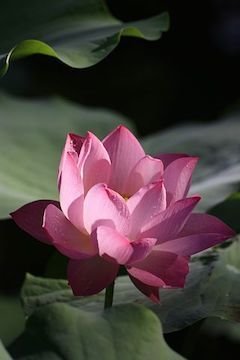
The Eightfold Path
The end of this suffering would be nirvana, or in other words, to escape the cycle of rebirth. Nirvana cannot be achieved in this world, but by obtaining a state of happiness, the satisfaction of no longer worrying about the same'I', a person can run away from the pain of life. As Buddha, "the enlightened one", Siddhartha Gautama began his teachings. In his first sermon near Varanasi in India, he indoctrinated what he found to be the truth of the path that leads to the end of pain, the "Eightfold Noble Path" consisting of these eight precepts:
1. Straight view
2. Straight intention
3. Straightforward speech
4. Straight action
5. Straight occupancy
6. Straightforce
7. Straight Attention
8. Straight concentration
Until the end of his life, Buddha was traveling from town to town instructing his eightfold path. It is believed that he died at the age of 80 at the home of a friend who inadvertently served him a meal containing toxic mushrooms.
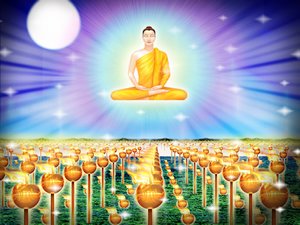
Under a tree, like when he was born and when he attained enlightenment, the Buddha reached parinirvana. In the places where these events took place, altars have been placed and they are places of pilgrimage. The altar of parinirvana is located in Kushinagar. The Buddha decided to die in what Ananda described as a "sad shanty town", but it was no accident. There, amidst the living room trees, the local people had built a stone canapé for the village elders to sit on. It was here that the Buddha lay down and explained what arrangements he wanted for his funeral. Meanwhile, Ananda felt a great sadness invade him and left to cry alone. However, the Buddha called him and said, "That's enough, Ananda. Don't be like this. Sooner or later we have to get rid of everything we love most. For a long time and in a selfless way you have shown great affection for me, through your actions, your words and your thoughts. Keep your practice alive and you will achieve liberation from all obstacles. Then, in front of all the monks, the Buddha extolled the virtues of Ananda. Then he spoke of monastic discipline. His last words invited those monks who had doubts about his teachings to express them at that time, as he was still there to resolve them. There were no further questions. After absolute silence the Buddha exclaimed: "Decadence is inherent in all that is conditioned. With conscious attention, keep up the effort!" He then entered a meditative state and died.
My doubt
1. In the Buddhist tradition, it is generally called parinirvana, which is the state the Buddha is said to have attained. Nirvana means enlightenment. Pari means "supreme". What is the difference between nirvana and parinirvana?😯
2. Why has the reincarnation of the Dalai Lama been politicized?😯
Here's the answer my friend @reddust gave me:
"Nirvana means enlightened in this life, paranirvana is the death of this body and there is no rebirth. A Bodhisattva puts off enlightenment for the sake of helping people wake up from their self caused suffering and become enlightened. The Bodhisattva and The Dalai Lama is a spiritual and political figure. The Chinese are in control of Tibet and want the next Dalai Lama in their control. The Dalai Lama has said many times he may not take rebirth or come back as a woman...hahaha (he has a good sense of humor). The attainments of a Arhat, Pratyekabuddha (lone Buddha) and a Buddha who teaches the Dharma. A puts off all the attainments to attain the perfections to help all living beings."

"It is irrelevant to say that a Buddha exists after death. It is not appropriate to say that a Buddha does not exist after death. Neither is it saying that a Buddha both exists (in one sense) and does not exist (in another) after death. It is not appropriate to say that a Buddha neither exists nor does not exist after death”.
*Siddhartha Gautama *
*Siddhartha Gautama *

You might be interested:

Thank you for reading my publications. If you like it, spread it around...
Thank you for reading my publications. If you like it, spread it around...

Your post had been curated by the @buildawhale team and mentioned here:
https://steemit.com/curation/@buildawhale/buildawhale-curation-digest-05-29-18
Keep up the good work and original content, everyone that uses this platform appreciates it!
Thanks for the support. A hug and prosperity to all.
Very informative Dharma post to people who are still new to Buddhism
Thank you for being here and for your support. May the tranquility, light and many more blessings fill your home! Prosperity.
Namo amitabha
tremendo trabajo hermano aquí mi visita
Prosperidad amigo. Le deseo miles de bendiciones. Gracias por su constante apoyo y su visita a mis post. Nos seguimos leyendo y escuchando al niño con sus bellas interpretaciones.